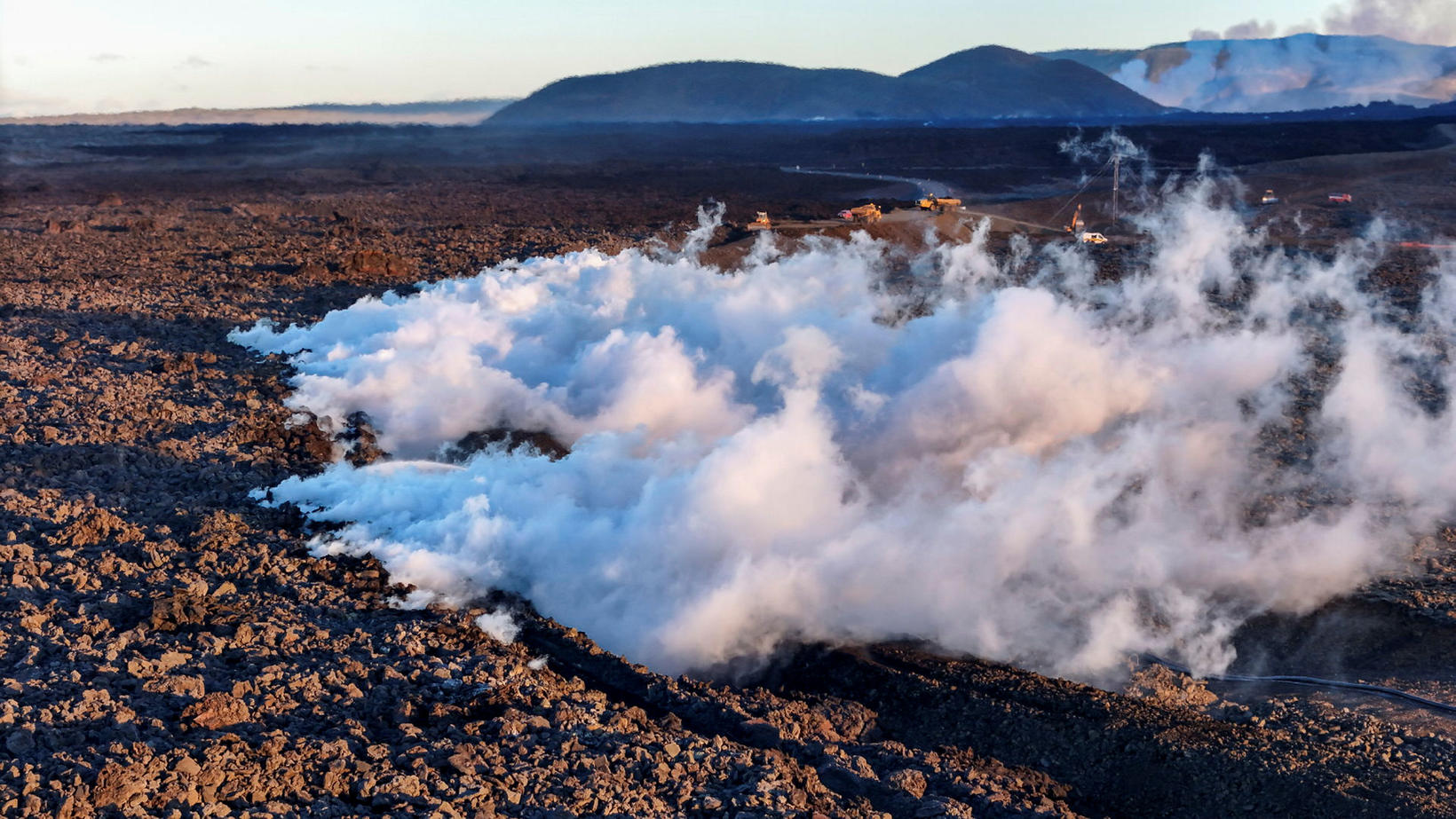“Ready for anything to erupt” – experts closely monitoring Reykjanes activity
Today marks exactly one year since the fourth eruption in the Sundhnúkagígar crater row began. mbl.is/Hákon
While the Sundhnúkagígar crater row in Reykjanes remains calm for now, seismic activity continues beneath the surface. In the past 12 hours, six earthquakes have been recorded near the magma chamber, the largest measuring 1.3 in magnitude.
Bryndís Ýr Gísladóttir, a natural hazard specialist at the Icelandic Meteorological Office, says all signs indicate that an eighth eruption at Sundhnúkagígar is imminent. This comes exactly one year after the fourth eruption in the ongoing series, which began in December 2023.
“We are prepared for anything to erupt and are monitoring the situation closely,” she said.
Minimal warning expected for the next eruption
Gísladóttir expects the next eruption to occur in the same general area as the last, which began on November 20 and ended on December 9.
“The warning period for the last eruption was the shortest we’ve seen in this eruption series, and we must prepare for a similar situation,” she added, noting that scientists anticipate just 30 to 40 minutes of warning before an eruption.
The magma accumulation beneath Svartsengi has grown slightly larger than in previous eruptions, but experts believe the upcoming event will be similar in scope to its predecessors.
Earthquake swarm at Reykjanestá diminishing
Meanwhile, seismic activity at Reykjanestá, which began on Wednesday, has significantly decreased. In the past 24 hours, only six to seven earthquakes have been detected, compared to over 700 recorded since the swarm began.
The previous earthquake swarm in this area occurred at the end of December 2024. Since 2023, five earthquake swarms have been recorded in the same region. Geologists believe these quakes may be triggered by shifts in stress levels along the Reykjanes Peninsula, mirroring seismic patterns observed in recent years.




/frimg/1/57/87/1578747.jpg)





